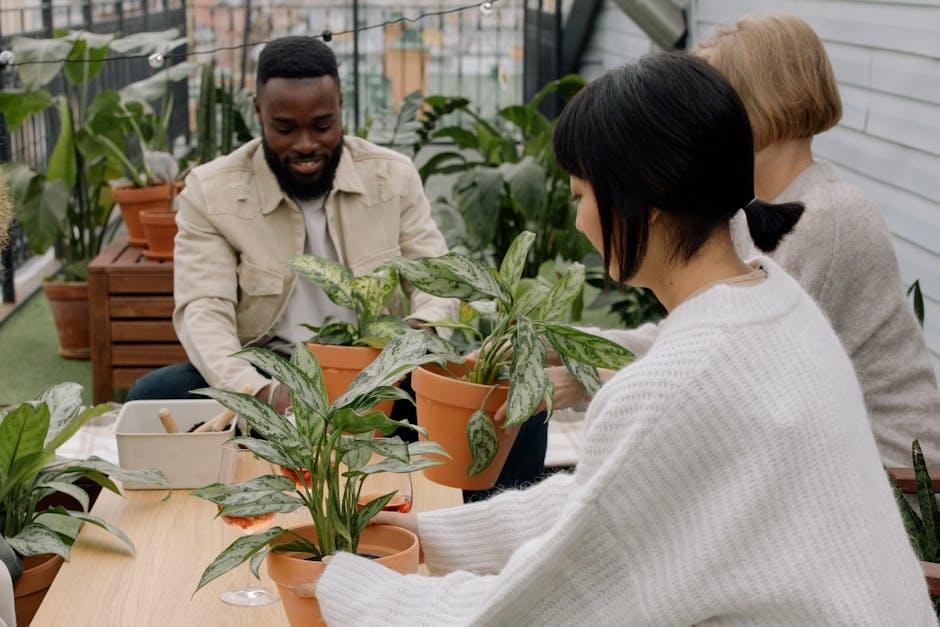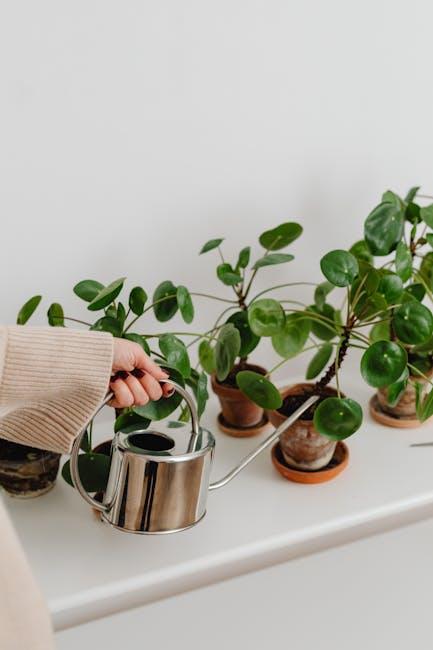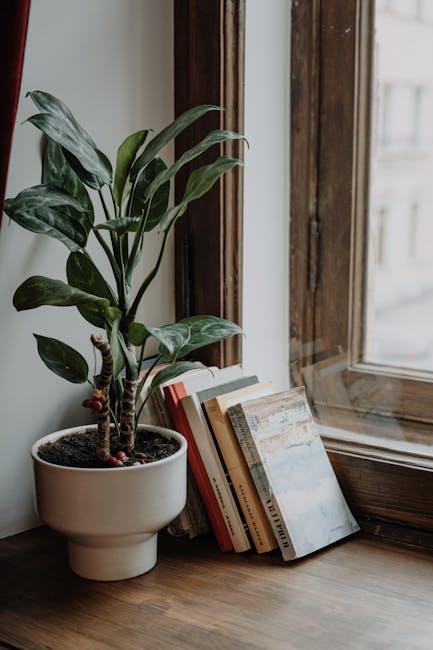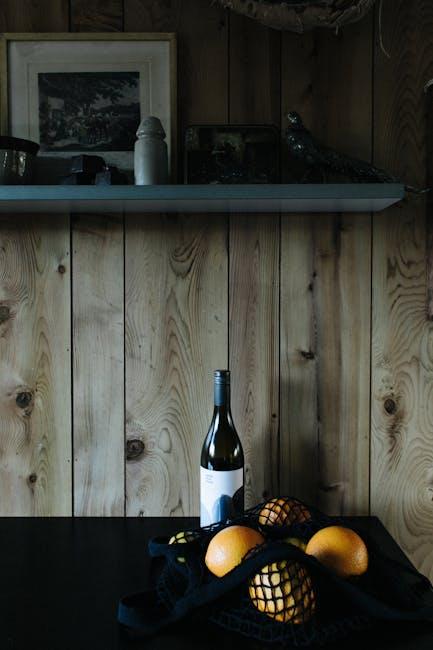In the quiet corners of our homes, houseplants offer a breath of life, a splash of green that soothes the soul and purifies the air. Yet, for many, the joy of nurturing these leafy companions is shadowed by a frustrating pattern: plants that wither, droop, or simply refuse to thrive. Caring for houseplants without killing them may seem like an elusive art, but it’s a skill rooted in understanding, patience, and a touch of mindfulness. Whether you’re a seasoned plant parent or a curious beginner, this guide will help you unlock the secrets to keeping your indoor garden flourishing-without the heartbreak of a brown thumb.
Choosing the Right Plants for Your Home Environment

Selecting plants that thrive indoors begins by understanding the unique conditions of your living space. Consider factors such as natural light exposure, humidity levels, and temperature variations throughout the day. Plants like snake plants and pothos are excellent for low-light corners, while sun-hungry species like succulents and cactus flourish near bright, south-facing windows. Matching a plant’s needs with your home’s environment not only ensures survival-it encourages vibrant growth.
To simplify your decision, here’s a quick reference guide to popular houseplants and their environmental preferences:
| Plant | Light | Humidity | Care Level |
|---|---|---|---|
| Snake Plant | Low to bright indirect | Low | Easy |
| Peace Lily | Low to medium indirect | High | Moderate |
| Succulents | Bright direct | Low | Easy |
| Spider Plant | Bright indirect | Moderate | Easy |
Keep in mind that some plants may require minor adjustments based on your home’s unique characteristics. Occasionally rotating your plants to catch different angles of sunlight or grouping moisture-loving plants together to boost local humidity are small tweaks that make a big difference. Ultimately, choosing plants wisely is the first step in cultivating a thriving indoor garden that compliments your lifestyle.
Mastering Watering Techniques to Avoid Common Mistakes

When it comes to nurturing your leafy companions, the key is not just watering but watering *right*. Overwatering and underwatering are two of the most frequent sins that can turn your green oasis into a withered landscape. Instead of following a rigid schedule, pay attention to your plant’s individual needs. Factors like pot size, soil type, and ambient humidity all affect how often your plants should be quenched. Remember, it’s better to let the top inch of soil dry out before the next watering than to drown roots in constant moisture.
Essential watering habits include:
- Using room temperature water to avoid shock
- Watering early in the day to allow leaves to dry off
- Ensuring proper drainage to prevent water from pooling at the bottom
| Plant Type | Watering Frequency | Warning Sign |
|---|---|---|
| Succulents | Every 2-3 weeks | Yellow, mushy leaves |
| Ferns | 2-3 times per week | Crispy brown edges |
| Peace Lilies | Once a week | Wilting despite moist soil |
Understanding Light Needs and Placement Strategies

Light is the lifeblood of any thriving houseplant, yet its requirements vary drastically between species. Some plants bask happily in direct sunlight, soaking up energy and flaunting vibrant foliage, while others prefer the gentler touch of indirect or filtered light to avoid leaf scorch. Understanding your plant’s origin-whether it hails from tropical rainforests or desert landscapes-can provide vital clues to its ideal light environment. By mimicking natural conditions, you not only boost growth but also enhance resilience against common issues such as wilting or discoloration.
Strategic placement is essential for meeting these light preferences. Here are some practical tips to help you position your houseplants with precision:
- South-facing windows typically offer the brightest light, suitable for sun-loving succulents and cacti.
- East- or west-facing spots provide moderate light, excellent for most foliage plants like pothos and ferns.
- North-facing corners supply lower light levels, perfect for shade-tolerant species like snake plants or zz plants.
| Light Level | Window Orientation | Example Plants |
|---|---|---|
| Bright Direct | South | Aloe Vera, Jade Plant |
| Bright Indirect | East, West | Spider Plant, Boston Fern |
| Low Light | North | ZZ Plant, Snake Plant |
Nurturing Soil Health with Proper Feeding and Repotting Practices

Maintaining vibrant, thriving houseplants starts from the ground up-literally. Giving soil the right nutrients at optimal intervals replenishes essential minerals and fosters strong root systems. Rather than overfeeding, which can create chemical imbalances, focus on a balanced regimen using slow-release fertilizers or organic composts. These options release nutrients gently, promoting steady growth without shocking the plant’s delicate environment. Remember, each plant has specific needs, so tailoring feedings according to its species and growth cycle is key to nurturing lush foliage and resilient health.
Repotting is equally critical in preserving soil vitality and avoiding root-bound stress. When roots start circling tightly, they compete for nutrients and water, limiting the plant’s potential. Opt for a mildly larger pot with fresh, well-aerated soil designed to suit your plant’s needs-whether succulent, tropical, or flowering varieties. Here’s a simple guide to help you select the right mix:
| Plant Type | Ideal Soil Mix | Why It Works |
|---|---|---|
| Succulents | Sandy, well-draining | Prevents root rot by allowing quick drying |
| Tropical | Rich, loamy with organic matter | Holds moisture yet provides nutrients |
| Flowering | Light, fertile mix with peat | Supports blooms with balanced nourishment |
- Repot during spring or early summer to align with active growth.
- Gently loosen roots if they are densely packed before placing in new soil.
- Water lightly after repotting to settle the soil without saturation.
To Wrap It Up
Caring for houseplants doesn’t have to be a delicate dance teetering on the edge of disaster. With a little patience, attention, and a touch of curiosity, you can transform your home into a thriving green sanctuary. Remember, each leaf tells a story, and every sprout is a sign of your growing confidence. So, take a deep breath, embrace the occasional misstep, and let your houseplants become living proof that nurturing life-no matter how small-is a rewarding journey rather than a daunting task.








